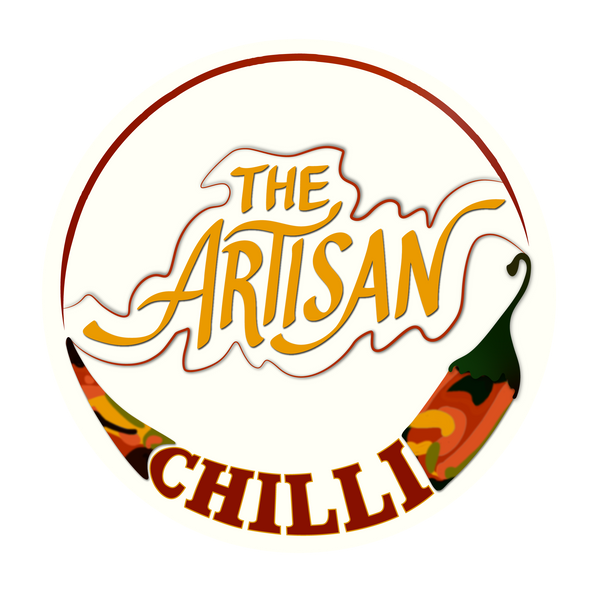History of The Scoville Scale
Mohammed YusufaliShare
For chilli enthusiasts and spice lovers, the Scoville Scale is a familiar term. It’s the standard by which the heat of chillies and hot sauces is measured, giving us a way to understand just how fiery that next bite might be. But where did this scale come from, and how does it work? In this post, we’ll explore the history of the Scoville Scale, how it measures the heat of chillies, and provide examples of different chillies at various Scoville Heat Units (SHU).
The Origin of the Scoville Scale
The Scoville Scale was developed in 1912 by an American pharmacist named Wilbur Scoville. At the time, Scoville was working for the Parke-Davis pharmaceutical company, where he sought to create a method to measure the pungency (heat) of chilli peppers. The result was the Scoville Organoleptic Test, which became the foundation for the Scoville Scale we use today.
Scoville’s original test involved soaking dried chilli peppers in alcohol to extract their capsaicin—the chemical compound responsible for the sensation of heat. This extract was then diluted in a sugar-water solution. A panel of five trained tasters would sample increasingly diluted concentrations of the solution until the heat was no longer detectable. The level of dilution required to reach this point determined the chilli’s rating on the Scoville Scale. For example, if a chilli extract had to be diluted 10,000 times before its heat was undetectable, it would receive a rating of 10,000 Scoville Heat Units (SHU).
Modern Methods of Measuring Heat
While Wilbur Scoville’s original test was innovative for its time, it was also highly subjective, relying on human tasters' heat tolerance, which could vary widely. Today, more accurate methods, such as High-Performance Liquid Chromatography (HPLC), are used to measure capsaicin concentration. These methods provide a more precise measurement of a chilli’s heat level, which is then converted into Scoville Heat Units for consistency with the traditional scale.
Despite these advancements, the Scoville Scale remains the most widely recognised system for categorising chilli heat, making it a valuable tool for both consumers and producers.
Examples of Chillies at Different Scoville Measurements
The Scoville Scale covers a vast range, from mild bell peppers to the hottest chillies in the world. Here are some examples of chillies at various Scoville Heat Units:
- Bell Pepper (0 SHU): Bell peppers are at the very bottom of the Scoville Scale. They contain no capsaicin, which means they have no heat at all. They are often used in salads, stir-fries, and as a crunchy snack.
- Poblano Pepper (1,000 - 1,500 SHU): Known for their mild heat, poblano peppers are commonly used in Mexican cuisine. When dried, they are referred to as ancho peppers, which have a slightly smoky flavour.
- Jalapeño Pepper (2,500 - 8,000 SHU): One of the most popular chillies globally, jalapeños have a moderate heat level that suits a wide variety of dishes, from salsas to nachos. Their heat can vary significantly, making them versatile for different palates.
- Cayenne Pepper (30,000 - 50,000 SHU): Cayenne peppers are significantly hotter and are often used in their powdered form to add heat to dishes, sauces, and marinades. They are also a key ingredient in many hot sauces.
- Bird’s Eye Chilli (50,000 - 100,000 SHU): Commonly used in Thai and Southeast Asian cuisine, Bird’s Eye chillies pack a fiery punch. Despite their small size, they bring intense heat to curries, stir-fries, and sauces.
- Habanero Pepper (100,000 - 350,000 SHU): Habaneros are known for their fruity flavour and high heat. They are often used in hot sauces and salsas but should be handled with care due to their potency.
- Ghost Pepper (Bhut Jolokia) (800,000 - 1,041,427 SHU): Once considered the hottest chilli in the world, the Ghost Pepper comes from India and is incredibly hot. It is often used in extreme spicy food challenges and dishes where intense heat is desired.
- Carolina Reaper (1,641,183 - 2,200,000 SHU): Currently recognised as the world’s hottest chilli pepper by the Guinness World Records, the Carolina Reaper is a hybrid pepper that can reach over 2 million SHU. Its extreme heat, combined with a fruity flavour, has made it popular for hot sauce makers and chilli challenges.
The Science Behind Chilli Heat: Capsaicin and Your Senses
The sensation of heat from chillies is caused by capsaicin binding to the pain receptors in your mouth and throat, specifically the TRPV1 receptors. These receptors are responsible for detecting heat and physical abrasion, which is why eating something very spicy can feel like a burn. Interestingly, capsaicin doesn’t cause any actual damage to tissues; the sensation is purely a trick played on your nerves.
Capsaicin’s effect is also why people experience a rush of endorphins—the body’s natural painkillers—when eating spicy foods, which can lead to a sense of euphoria and why some people become "addicted" to the burn.
Conclusion: The Ever-Evolving World of Chillies and Heat
From its creation in the early 20th century to its current use in modern spice labs, the Scoville Scale has remained a key measure of chilli heat, helping enthusiasts and producers alike understand the power of these fiery fruits. As growers continue to experiment with crossbreeding to create even hotter peppers, the Scoville Scale will undoubtedly keep evolving, documenting the world’s quest for the ultimate spicy experience.
